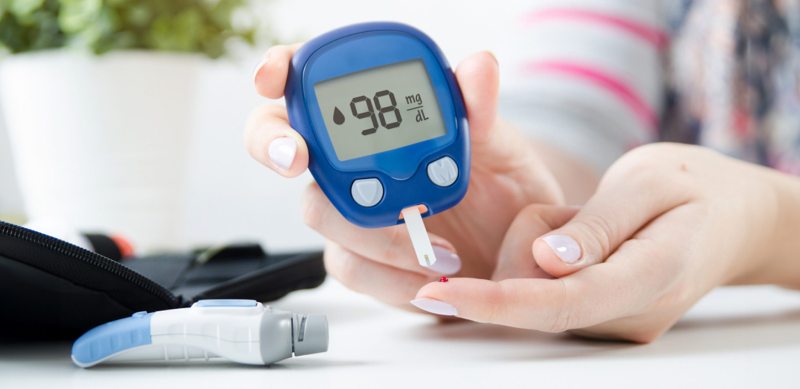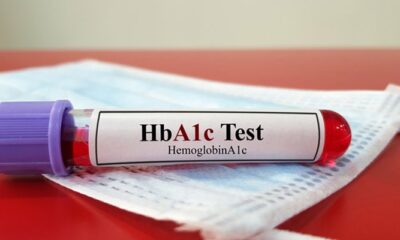Diabetes mellitus, commonly referred to as diabetes, is a group of chronic conditions affecting millions worldwide. It disrupts how your body regulates blood sugar (glucose), a vital energy source for your cells. This article empowers you to understand diabetes, its various forms, and most importantly, how to take control of your health.
Whether you’ve recently received a diagnosis or simply want to be proactive about your well-being, this comprehensive guide equips you with essential knowledge. We’ll delve into the different types of diabetes, risk factors, symptoms, diagnosis, and most importantly, explore effective management strategies and potential preventative measures. Remember, early detection and proactive management are crucial for living a long and healthy life with or without diabetes.
Demystifying Diabetes: The Different Types
- Type 1 Diabetes: This autoimmune disease occurs when the body’s immune system attacks insulin-producing beta cells in the pancreas. As a result, the body produces little to no insulin. Symptoms typically manifest in childhood or young adulthood, and lifelong insulin therapy is required to manage blood sugar levels. The exact cause of Type 1 diabetes remains unknown, while genetics play a role.
- Type 2 Diabetes: The most common type, accounting for around 90% of all diabetes cases. In Type 2 diabetes, the body either develops insulin resistance, where cells become less responsive to insulin, or has insulin deficiency. Risk factors include family history, ethnicity, age, weight, physical inactivity, and unhealthy diet. Lifestyle modifications and medications can often help manage Type 2 diabetes effectively.
- Gestational Diabetes Mellitus (GDM): This form of diabetes develops during pregnancy. Hormonal changes associated with pregnancy can affect how the body uses insulin. GDM usually resolves after childbirth but increases a woman’s risk of developing Type 2 diabetes later in life.
Risk Factors: Understanding Your Predisposition
While family history is a significant risk factor, particularly for Type 2 diabetes, several other factors can contribute to developing the disease:
- Age: The risk of Type 2 diabetes increases with age.
- Ethnicity: Certain ethnicities have a higher prevalence of diabetes, possibly due to a combination of genetic and environmental factors.
- Weight: Being overweight or obese is a significant risk factor for Type 2 diabetes.
- Physical Inactivity: A sedentary lifestyle increases your risk.
- Diet: A diet high in processed foods, sugary drinks, and unhealthy fats can contribute to diabetes risk.
- Polycystic Ovary Syndrome (PCOS): Women with PCOS are at higher risk for both Type 2 diabetes and GDM.
- Prediabetes: This condition signifies borderline high blood sugar levels and can progress to Type 2 diabetes without lifestyle changes or medication.
- History of Gestational Diabetes: Women who had GDM are at an increased risk of developing Type 2 diabetes later in life.
Recognizing the Signs: Common Symptoms of Diabetes
The symptoms of diabetes can vary depending on the type and severity of the condition. Here are some common signs to watch out for:
- Frequent urination: The body tries to expel excess sugar through urine, leading to increased urination, especially at night.
- Excessive thirst: Increased urination can lead to dehydration and excessive thirst.
- Unexplained weight loss: The body may break down muscle and fat for energy if it can’t use glucose effectively, leading to unintended weight loss.
- Increased hunger: The body may crave more food to compensate for the lack of energy it’s getting from glucose.
- Fatigue and tiredness: Cells don’t have enough energy due to insufficient glucose uptake, leading to fatigue.
- Blurred vision: High blood sugar can damage blood vessels in the eyes, leading to blurred vision.
- Slow-healing wounds: High blood sugar can impair circulation and slow down the healing process.
- Frequent infections: Diabetes can weaken the immune system, making you more susceptible to infections.
Diagnosis and Beyond: Unveiling the Condition
If you experience any of these symptoms, it’s crucial to see your doctor for a diagnosis. Several tests can be used to diagnose diabetes:
- Fasting Blood Sugar (FBS) Test: Measures blood sugar levels after not eating for at least 8 hours.
- Hemoglobin A1c (HbA1c) Test: Provides an average of your blood sugar control over the past 2-3 months.
- Random Blood Sugar (RBS) Test: Measures blood sugar levels at any time, regardless of when you
last ate. This test is often used for initial screening.
- Oral Glucose Tolerance Test (OGTT): Measures blood sugar levels after drinking a sugary solution. This test is often used to diagnose prediabetes or gestational diabetes.
Taking Charge: Effective Management Strategies
While there’s no cure for Type 1 diabetes, various strategies can effectively manage both Type 1 and Type 2 diabetes:
- Diet: A healthy diet is the cornerstone of diabetes management. Focus on whole grains, fruits, vegetables, and lean protein. Limit processed foods, sugary drinks, and unhealthy fats. A registered dietitian can help create a personalized meal plan.
- Exercise: Regular physical activity helps your body use insulin more effectively and lowers blood sugar levels. Aim for at least 30 minutes of moderate-intensity exercise most days of the week.
- Blood Sugar Monitoring: Regularly monitoring your blood sugar levels helps you understand how your body reacts to food, exercise, and medications. This empowers you to adjust your management strategies accordingly.
- Medications: Several medications can help manage diabetes, including insulin, oral medications, and injectable medications. Your doctor will determine the best medication(s) for your individual needs.
- Weight Management: Losing weight, even a modest amount, can significantly improve blood sugar control, particularly for Type 2 diabetes.
- Stress Management: Chronic stress can raise blood sugar levels. Explore stress-reduction techniques like yoga, meditation, or deep breathing exercises.
- Foot Care: Diabetes can increase your risk of foot problems. Regularly inspect your feet for cuts, blisters, or other injuries. Practice good hygiene and wear proper footwear.
- Regular Checkups: Schedule regular checkups with your doctor to monitor your blood sugar levels, assess for complications, and adjust your treatment plan as needed.
- Healthy Habits: Making healthy lifestyle choices, such as getting enough sleep, avoiding smoking, and limiting alcohol consumption, can significantly benefit your overall health and diabetes management.
Empowering Prevention: Can You Avoid Diabetes?
While you can’t control your family history, you can significantly reduce your risk of developing Type 2 diabetes through a healthy lifestyle. Here are some key strategies for prevention:
- Maintain a healthy weight: Losing weight, even a modest amount, can improve insulin sensitivity and reduce diabetes risk.
- Eat a balanced diet: Focus on whole grains, fruits, vegetables, and lean protein while limiting processed foods, sugary drinks, and unhealthy fats.
- Engage in regular physical activity: Aim for at least 30 minutes of moderate-intensity exercise most days of the week.
- Get regular checkups: Schedule regular checkups with your doctor, including blood sugar screenings, especially if you have risk factors for diabetes.
Living Well with Diabetes: A Positive Outlook
Diabetes doesn’t have to define your life. With proper management and a healthy lifestyle, you can live a long and fulfilling life. Here are some tips to maintain a positive outlook:
- Stay informed: Educate yourself about diabetes and its management.
- Join a support group: Connecting with others who understand the challenges of diabetes can provide emotional support and encouragement.
- Set realistic goals: Focus on making small, sustainable changes to your lifestyle.
- Celebrate your successes: Acknowledge your progress, no matter how small.
- Don’t be afraid to ask for help: Your doctor, diabetes educator, and registered dietitian are there to support you.
Conclusion
Understanding diabetes empowers you to take control of your health. Early detection, proactive management, and a commitment to a healthy lifestyle are key to living well with or even preventing diabetes. Remember, you’re not alone in this journey. With knowledge, support, and the right approach, you can manage diabetes effectively and live a vibrant life.
Note:
This information is intended for general knowledge only and should not be a substitute for professional medical advice. Always consult with your doctor for diagnosis and treatment.

 Diabetology2 weeks ago
Diabetology2 weeks ago
 Diabetology2 weeks ago
Diabetology2 weeks ago
 Diabetology1 week ago
Diabetology1 week ago
 Diabetology1 week ago
Diabetology1 week ago
 Diabetology1 week ago
Diabetology1 week ago
 Diabetology2 weeks ago
Diabetology2 weeks ago
 Diabetology1 week ago
Diabetology1 week ago
 Diabetology2 weeks ago
Diabetology2 weeks ago








